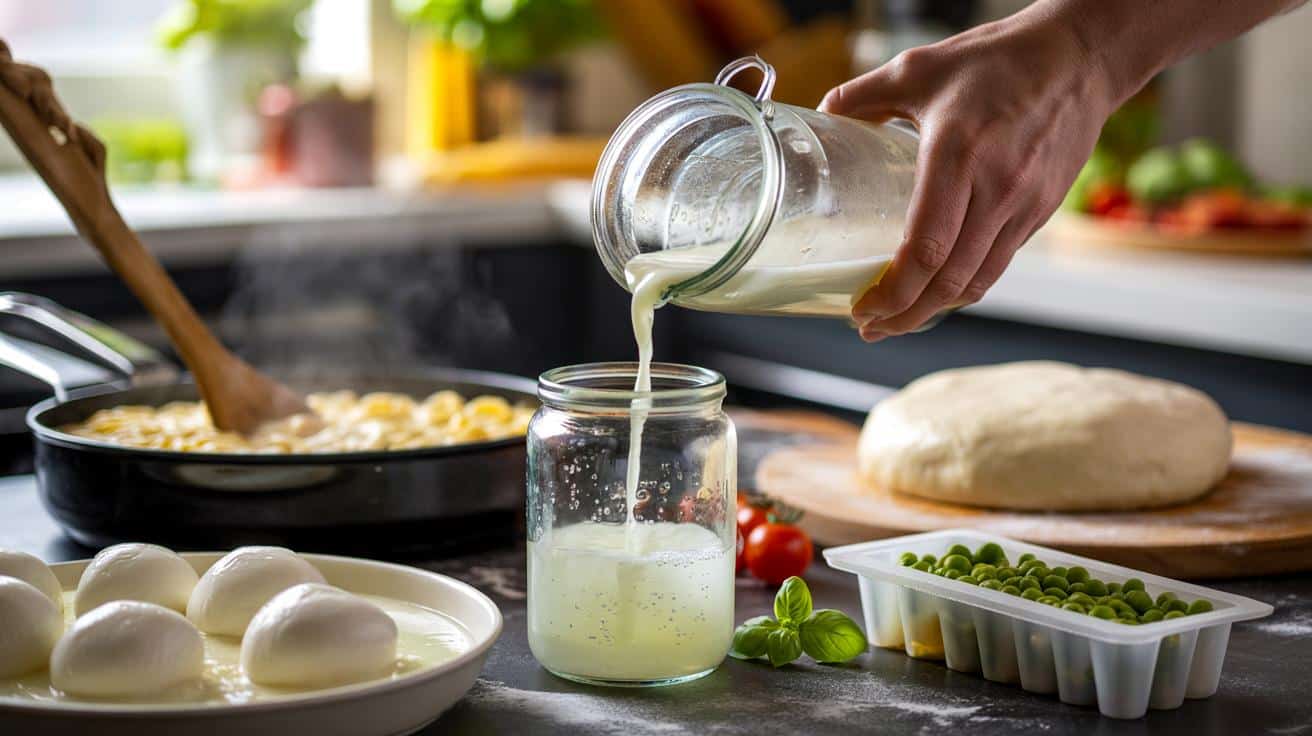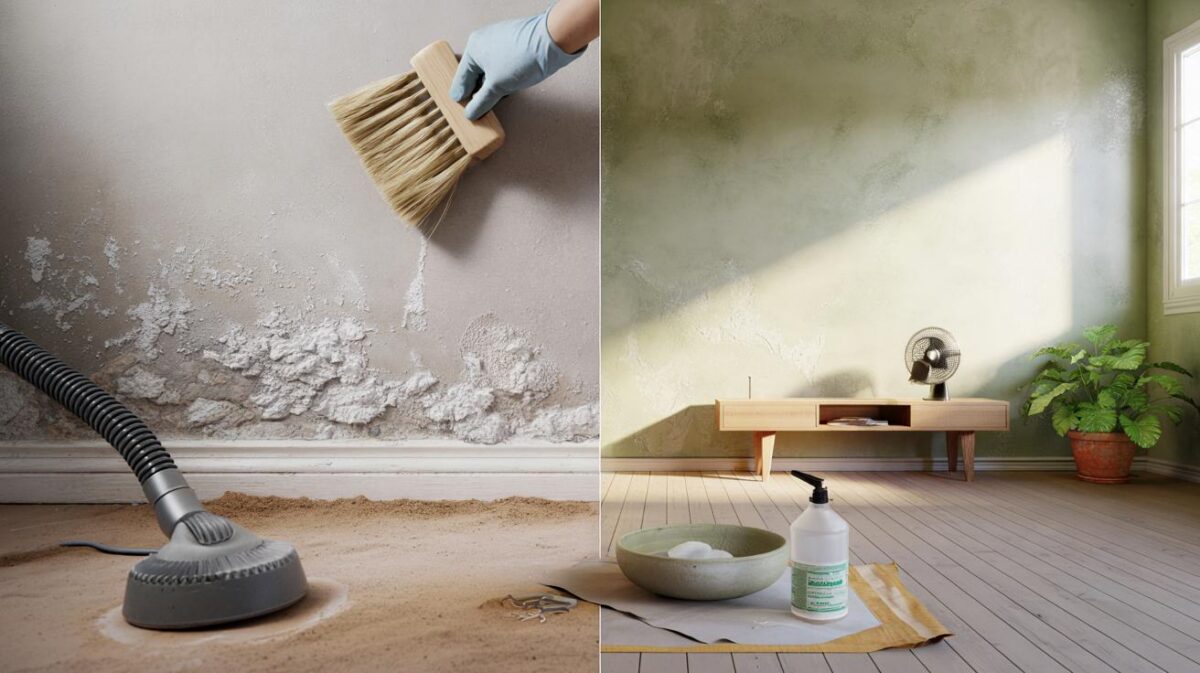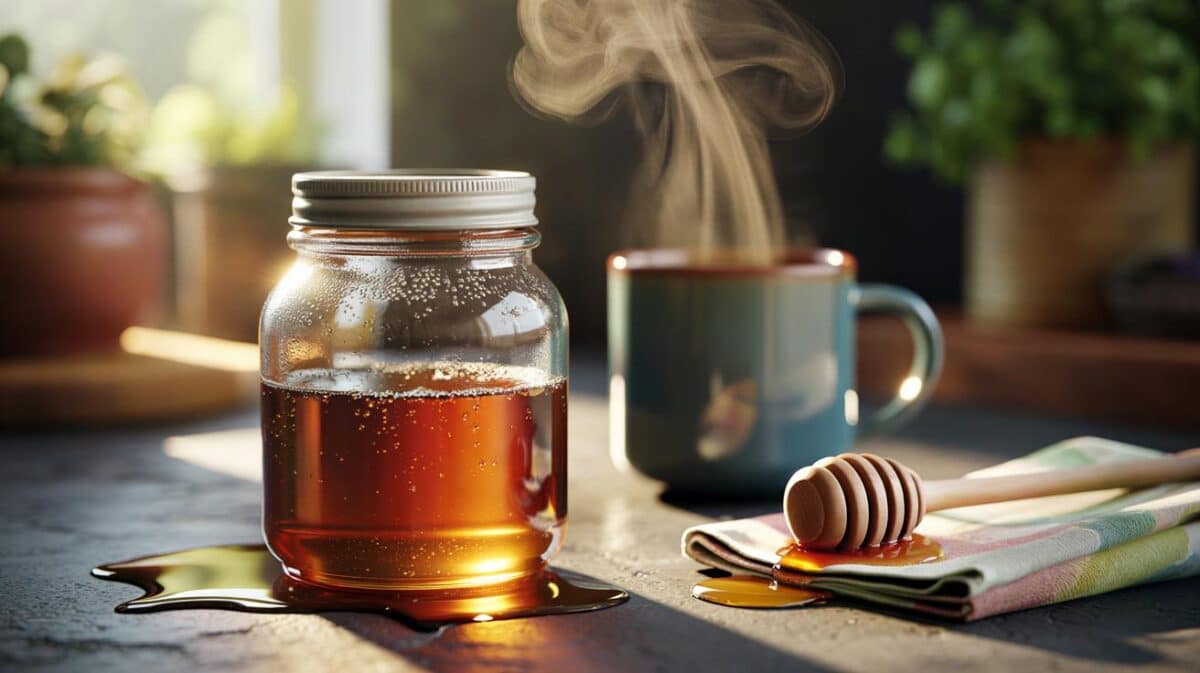Never throw away mozzarella water again. That cloudy liquid you pour down the sink is quiet flavour, gentle salt, and a tiny kitchen upgrade waiting to happen.
I watched it spin away one lazy Saturday, the kind of small domestic waste you barely clock because lunch is waiting. Tomatoes sliced, basil torn, the cheese beading with cold. The water? Gone in a heartbeat, forgotten by the time the kettle clicked.
I paused, for once. The liquid had a clean dairy scent, whispering of whey and salt and a cow in a green field, far from my kitchen window. It didn’t smell like rubbish. It smelled like a shy ingredient. I caught myself wondering if the empty sink was the wrong place—and whether I’d just poured away the secret to better dough, softer veg, brighter soups.
What if the best thing in the tub isn’t the cheese at all?
The brine you’re binning is a tiny flavour bomb
Mozzarella water isn’t just water. It’s lightly salted, softly lactic, and flecked with milk sugars that give food a round, gentle lift. Think of it as the pale cousin of stock—subtler, cleaner, quietly savoury. A splash can coax noodles, grains, and bread dough into tasting like you tried harder than you did.
There’s also a bit of alchemy at play. Salt seasons from within, not just on the surface, and the mineral trace in the brine nudges texture in a friendlier direction. Grains cook a touch plumper. Doughs relax. Vegetables keep their bite yet lose that flatness you get from plain tap water. It’s domestic magic, no wand required.
You’ll taste it most where delicacy matters. Soups that want brightness, not brawn. A risotto that needs silk, not heft. Pasta water that whispers salt all the way through, not just on the outside. The payoff is understated, which is why we miss it. It doesn’t shout; it hums.
Real kitchens, small switches, better food
A friend tested this on a rainy Tuesday: half the liquid in homemade pizza dough swapped for mozzarella water. The difference? A base that browned eagerly and tasted seasoned from the inside out, with no extra effort. The crust had that gentle snap, then tender chew, like a good pizzeria on a quiet night.
I tried a simpler move the next day. A saucepan of pasta water kissed with a cup of brine, then the usual boil. The pasta came out more seasoned, needing less sauce to sing. The brine also turned a pan of peas into something you’d serve to guests without apology. We’ve all had that moment when a side dish is fine but not quite there—this bumped it up a notch.
There’s no need for spreadsheets or scales. Treat mozzarella water like a seasoned booster. Use a third to a half of the liquid in something you’re already making and let it get on with the work. The taste stays clean, the salt speaks softly, and your kitchen routine stays easy.
What to do instead: practical uses that slot into your week
Start with dough. Swap 150–250 ml of your dough liquid for mozzarella water per large pizza or two small loaves. Mix, rest, then fridge-ferment if you like that airy chew. The brine helps gluten behave and seasons the crumb so every bite tastes a touch fuller. **Use it in dough** when you’re short on time but want the result to feel “bakery”.
Next, think pots. Stir a cup of brine into pasta water, risotto stock, or the liquid for poaching chicken, fish, or eggs. It gives you even seasoning before you reach for the salt cellar. If you’re cooking veg, steam them over a centimetre of brine instead of plain water. They’ll keep their colour and come off the heat tasting less like an afterthought. Let’s be honest: nobody really does that every day.
If you’re storing leftovers, decant the brine into a clean jar and park it in the fridge. Add it to soups, mash, and dressings across two or three days. **Freeze it in cubes** to toss into pans on rushed weeknights.
“Think of mozzarella water as pre-seasoned stock, but lighter: it lifts grains, soups, and veg without shouting.”
- **Season pasta water**: one mug of brine per large pot, then cook as usual.
- Blend into vinaigrettes: a spoonful in place of extra salt for a soft, dairy-kissed finish.
- Soak breadcrumbs for meatballs or veg patties; they’ll hold together and taste rounder.
- Loosen hummus, white-bean dip, or pesto without thinning flavour.
- Poach chicken or cod in half brine, half water for juicy results.
- Whisk into scrambled eggs for a silkier curd and even seasoning.
- Cook grains—barley, pearl couscous, farro—with a brine-to-water mix for depth.
Why it works, and what to watch
Brine seasons more evenly than a last-minute sprinkle. The salt and milk sugars permeate, carrying flavour further into starches and proteins. That’s why pasta boiled in lightly salted liquid tastes seasoned even before sauce hits the plate, and why risotto feels plush without a heavy ladle of cream.
There’s a limit. Mozzarella water is salty by design, so go gently with added salt. Start with a third brine to two-thirds water for boiling or braising. In doughs, swap up to half the liquid, then taste the baked crust before you tweak next time. If your cheese came in extra-salty brine, dial back to a quarter and nudge up if needed.
Storage is simple. Keep the brine cold and capped, use within 48–72 hours, and bin it if it smells sour or looks fizzy. You can freeze it in small tubs or ice trays for up to a month. If you’re saving a half-ball of mozzarella, top it up with fresh water and a pinch of salt rather than old brine and eat it soon. Soyons honnêtes : personne ne fait vraiment ça tous les jours.
The small habit that pays you back
Rescuing mozzarella water won’t change the world, but it might change your Tuesday dinner. It’s a habit that respects the ingredient you paid for and rewards you with better texture and cleaner, deeper flavour. It cuts waste without preaching. It’s also oddly satisfying—like finding a fiver in an old coat pocket and buying flowers on the way home.
There’s a human pleasure here, too. You start tasting the quiet things, the softer edges, the way salt and milk sugars make friends with grain and heat. Food gets kinder. A pot of peas remembers spring. A bowl of pasta needs less fuss and still tastes like you meant it.
That’s the joy of a tiny shift: more from what you already have, and a nudge towards cooking that feels resourceful, not joyless. Next time you open that tub, pause at the sink. The good stuff might be the bit you used to throw away.
| Point clé | Détail | Intérêt pour le lecteur |
|---|---|---|
| Saisonner en profondeur | Utilise la brine pour pâtes, risotto et légumes | Saveurs plus rondes sans effort supplémentaire |
| Améliorer les pâtes et pains | Remplacer 1/3 à 1/2 de l’eau par la brine | Texture plus tendre, croûte mieux dorée |
| Réduire le gaspillage | Conserver 2–3 jours, congeler en glaçons | Moins de déchets, booster prêt à l’emploi |
FAQ :
- Can I drink mozzarella water?It’s safe in small amounts but very salty and a bit lactic. Better to cook with it where that gentle savouriness can shine.
- How long does it keep in the fridge?Two to three days in a sealed jar. If it smells off, looks cloudy in a strange way, or fizzes, ditch it.
- Is buffalo mozzarella brine different from cow’s?Buffalo brine often tastes a touch richer and tangier. Treat both the same, but taste before using and adjust salt elsewhere.
- Can I store leftover mozzarella in the brine again?Yes, for a day or so. If the original brine is gone, make a quick 2% salt solution (20 g salt per litre of water), cover the cheese, and chill.
- What if I’m watching sodium?Use smaller splashes and balance with unsalted water. You’ll get the flavour nudge with less total salt in the dish.










This is genuinly brilliant—used half brine in my pizza dough and the crust tasted seasoned from the inside. Definitley keeping a jar in the fridge now. Thanks!